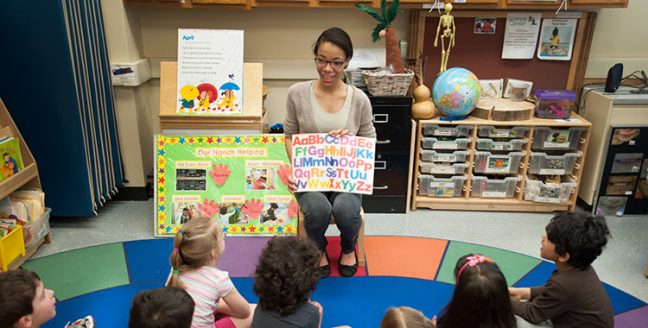Across our nation, school superintendents and building principals continue to experience a nationwide teacher shortage in areas such as math, science, English language learning, and special education. It will only get worse unless state department of education officials are willing to pilot innovative ideas.
Teaching is a demanding profession and the classroom can be a tough place to be. Gone are the days when individuals go into teaching just to “have something to fall back on” and to work the same hours as their children. As a result of increasing demands placed on teachers, low pay, long hours, and little respect, teachers are leaving the profession in droves and are choosing a different career path. Moreover, decreasing enrollment in university teacher preparation programs confirms that fewer men and women are even considering entering the teaching field. So, how can school district officials make sure there is a highly-qualified, caring, and competent teacher in every classroom?
Tackling the Teacher Shortage through “Grow Your Own” Programs
California’s STEP UP and Teach Program
California education officials recognize this critical teacher shortage, and they are committed to finding a solution. One initiative approved by the California Commission on Teacher Credentialing (CCTC) focuses on increasing the number of qualified mathematics teachers. At the district level, the Los Angeles Unified School District (LAUSD) is trying to increase its supply of special education and other hard-to-find teachers through its STEP UP and Teach program. This program provides mentoring as well as financial support to qualified candidates, often those who are already employed in the district as paraprofessionals and who have strong ties to the local community.
Paraprofessionals work with students either individually or in small groups under the supervision of licensed teachers. They may provide some tutoring in math or reading. They may help a special needs student get from one class to another throughout the day. Some paraprofessionals may work in before-school or after-school programs. They typically have earned at least 60 college credits toward a bachelor’s degree. Paraprofessionals often make the best teachers, because they are typically mature adults and often parents of students in the school or district. They are able to build experience and confidence in their teaching skills.
In California’s STEP UP and Teach program, principals are able to observe paraprofessionals working directly in the school throughout the year, which makes them known commodities as positions open up.
Kansas City Teacher Residency (KCTR) Program
Another “grow your own” approach is the Kansas City Teacher Residency (KCTR) program. The program is based on the premise that teachers are best trained on-site. Moreover, KCTR interns practice under the careful mentoring of experienced teachers in real-life situations. It’s also competency-based in many respects, because pre-service teachers must demonstrate what they know and are able to do on a daily basis and they have regular opportunities to improve their skills.
New Mexico “Grow Your Own Teachers Act”
The state of New Mexico is funding its own program designed to address teacher supply and demand challenges. The “Grow Your Own Teachers Act” seeks to provide opportunities for paraprofessionals (educational assistants) to pursue careers in teaching in New Mexico. The Act provides scholarships to attend a public university in New Mexico to earn a bachelor’s degree in education.
Minnesota’s GYO Grant Program
Likewise, the Minnesota Department of Education (MDE) has recently released the details for its Grow Your Own teacher grant program. This program is unique because it provides two funding pathways. Pathway 1 is for paraprofessionals who have made the decision to complete their bachelor’s degree and earn their teacher licensure. Pathway 2 is for high school students who want to explore teaching as a possible career choice.
Are Grow Your Own Programs the Answer?
Which of these Grow Your Own programs is most effective at meeting teacher supply and demand challenges across our nation? The verdict’s still out. School district officials may be able to recruit and hire teachers more easily. However, until we raise salaries and elevate respect for the teaching profession, it’s likely we’ll continue to have a national teacher shortage.
###
About the Author: Dr. Roberta Ross-Fisher has expertise in higher education quality assurance, educator preparation, and competency-based education. A former public school teacher and college administrator, Roberta is now an educational consultant specializing in the Council for the Accreditation of Educator Preparation (CAEP).
Twitter: @RRossFisher
Email: globaleducationalconsulting@gmail.com
Top Graphic Credit: iup.edu

